What are inlays and onlays?
An Inlays or onlays is a conservative dental prosthesis that is used to fix moderately damaged teeth. These restorations are ideal for fixing teeth that are too far damaged for a simple filling but not to the point where they require a full-coverage crown. Inlays and onlays are made in a laboratory or with a CAD/CAM milling machine from ceramic blocks. Placing an inlay or onlay restores the damaged portion of the tooth while preserving the healthy tooth structure. Inlays and onlays are durable, natural-looking, and very effective at restoring damaged teeth back to their original form. They also protect your tooth from developing further cavities and fractures.
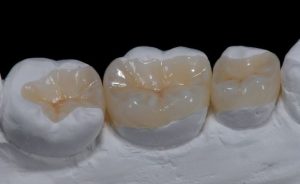
Inlays and onlays restore the damaged tooth portion while preserving healthy tooth structure
What is the process for receiving an inlay or onlay?
The process of receiving an inlay or onlay is similar to receiving a traditional crown. First, your dentist will numb up the tooth. Afterward, he or she will remove the damaged tooth structure and any cavities. Your dentist will take an impression or scan the finalized tooth. They will make an inlay or onlay by sending the impression or scan to their laboratory. Other times, your dentist uses a CAD/CAM machine to fabricate these restorations in-house. Once prepared, your inlay or onlay is bonded to the tooth and permanently locks in place. In case you're curious, here is the difference between inlays and onlays:
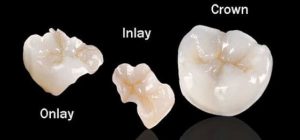
Inlays and onlays are made from ceramic either in a laboratory or with a CEREC machine
Inlays
Inlays are the more conservative restoration used to restore minimally damaged teeth. Placing an inlay on your tooth does not involve removing any exterior tooth walls. Essentially, an inlay is fully confined within the tooth itself. Inlays leave your outer tooth walls fully intact to preserve maximum tooth structure.
Onlays
Onlays are a bit larger than inlays and are used to restore more severely damaged teeth. Onlays extend to cover at least one or more outer tooth walls. Whereas inlays are closer to fillings in terms of size and function, onlays are closer to full-coverage crowns. Onlays cover more tooth structure and only leave a small portion of the tooth uncovered.
What is the difference between inlays and onlays versus a traditional crown?
Think of inlays and onlays as more conservative than traditional crowns. Despite that, inlays and onlays are similar to crowns in many ways:
- Inlays and onlays are made from ceramics just like most standard crowns
- The procedure for receiving an inlay or onlay is nearly identical to receiving a crown
- Inlays and onlays get bonded to your teeth the same way that a crown gets cemented onto the tooth
The only difference between these dental restorations is in how much tooth structure is removed. Inlays are the most conservative of the three. Onlays are a bit larger and require more tooth removal. Full-coverage crowns are the largest restoration and cover the entire portion of the tooth above the gum line. Inlays and onlays make a great option for restoring damaged teeth that can't be restored with a filling, but aren't necessarily ready for a full-coverage crown either.
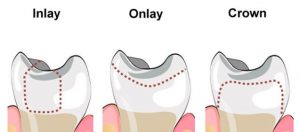
Inlays and onlays are more conservative than full coverage crowns and require less tooth removal
What are the benefits of inlays and onlays?
Inlays and onlays are used in place of traditional crowns to restore moderately damaged teeth. There are a few benefits that set inlays and onlays apart from fillings and crowns. Here are some of the reasons so many dentists use inlays and onlays to restore your teeth:
Excellent Tooth Protection
Both inlays and onlays are made from durable ceramic material. This makes them much stronger than traditional fillings. White fillings are made from resins that easily break and leak under repeated chewing stress. Large white fillings are very likely to fail over time and lead to nerve damage or infection. Inlays and onlays do a much better job of protecting teeth against cavities and chewing forces. They are also far less likely to break or leak the same way that white fillings do.
More Conservative Treatment
Inlays and onlays are more conservative treatments than full-coverage crowns. Inlays and onlays only cover the damaged portion of your tooth instead of your whole tooth. This means that they leave more of your original tooth structure intact. Being more conservative has its benefits. It reduces the likelihood of your tooth becoming sensitive, developing a root canal infection, or breaking off in a way that it can't be saved and needs a dental implant.
Excellent Durability
Inlays and onlays are made from zirconia which makes them extremely durable and fracture-resistant. A well-designed inlay or onlay could easily last for decades, sometimes even a lifetime. These restorations do a great job of protecting your teeth against cavities and fractures. Talk to your dentist to see if your tooth is a good candidate for receiving an inlay or onlay in lieu of a filling or standard crown.
Severely Damaged Teeth
The main benefit of an inlays or onlay is that they are more conservative than crowns. However, if your tooth is severely damaged, then there's no need for a conservative restoration. Severely damaged teeth are better restored with a full-coverage crown that protects the entire tooth. Placing an inlay or onlay leaves the tooth vulnerable to further damage that could lead to infection or even tooth loss. Talk to your dentist to see if your tooth is better suited for a conservative restoration like an inlay or onlay, or if a full-coverage crown is the better way to go.
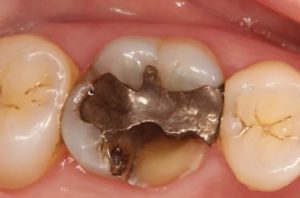
It's better to restore severely damaged teeth with a full coverage crown to protect the whole tooth
Root Canal-Treated Teeth
Root canal-treated teeth should always be restored with a full-coverage crown instead of an inlay or onlay. The root canal removes blood flow to the tooth. As a result, your tooth becomes fragile and weak over time. Placing a full-coverage crown is a better way to protect root canal-treated teeth. Inlays and onlays don't cover the entire tooth which leads to further damage to the teeth and is not a good option.
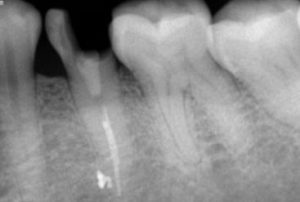
Root canal-treated teeth should always be restored with a full-coverage crown
Missing Teeth
You should avoid inlays and onlays if you have many missing teeth in your mouth. First off, missing teeth is a sign of failure to maintain proper oral hygiene. As a result, going with a stronger and more durable restoration option is probably a better choice. Additionally, patients with multiple missing teeth, overcompensate by placing additional force onto their remaining teeth. This added bite pressure causes your inlays and onlays to fracture. Consequently, it's best to go with a full-coverage crown when you have multiple missing teeth in your mouth.
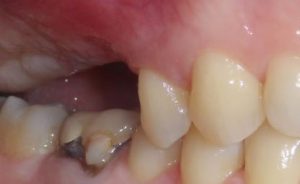
Patients with multiple missing teeth overcompensate by placing additional pressure on their remaining teeth
Poor Bite Relationship
Having a poor bite relationship places significantly more stress on the remaining teeth. For example, if you suffer from a crossbite, you are placing three to four times as much stress on your back teeth. Similarly, having an underbite or overbite places additional stress on your teeth. If you're suffering from a serious orthodontic issue that affect your bite then you should stay away from inlays and onlays. Full-coverage crowns are a much better option for patients with bite-related issues.
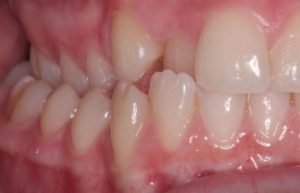
Patients with a crossbite place three to four times more pressure onto their back teeth
Heavy Tooth Grinders
Grinding your teeth has the same effect as missing teeth or orthodontic malocclusion. Heavy tooth grinders place about five to six times as much stress on their teeth. This additional stress causes your teeth and dental restorations to break much more frequently. It's better to go with full-coverage crowns if you're a heavy tooth grinder. Inlays and onlays are likely to break within a few years or even sooner. In fact, we recommend the heaviest tooth grinders to restore their teeth with gold or extra-strength zirconia, such as BruxZir, and only use full-coverage crowns. Otherwise, you will find yourselves redoing your restoration over and over again!
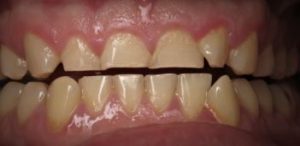
Heavy tooth grinders should always fo with full-coverage crowns made from sturdy material
If you'd like to learn more about different treatments related to inlays and onlays, click on the following links: